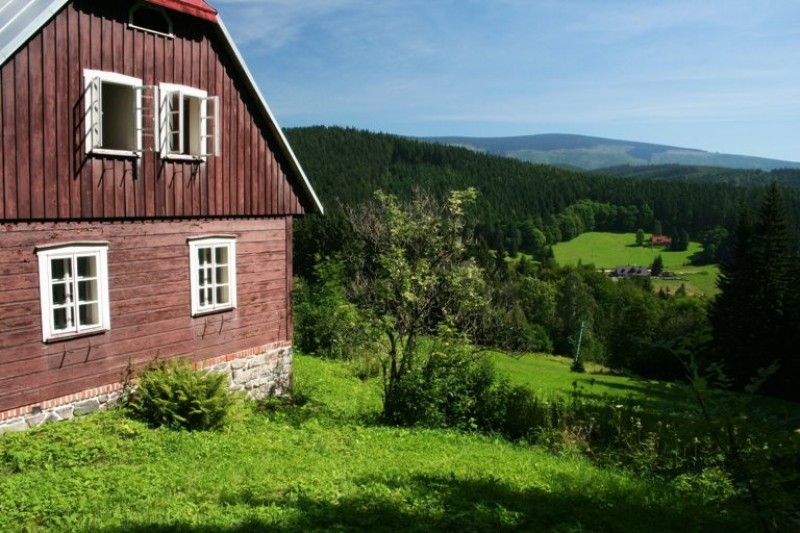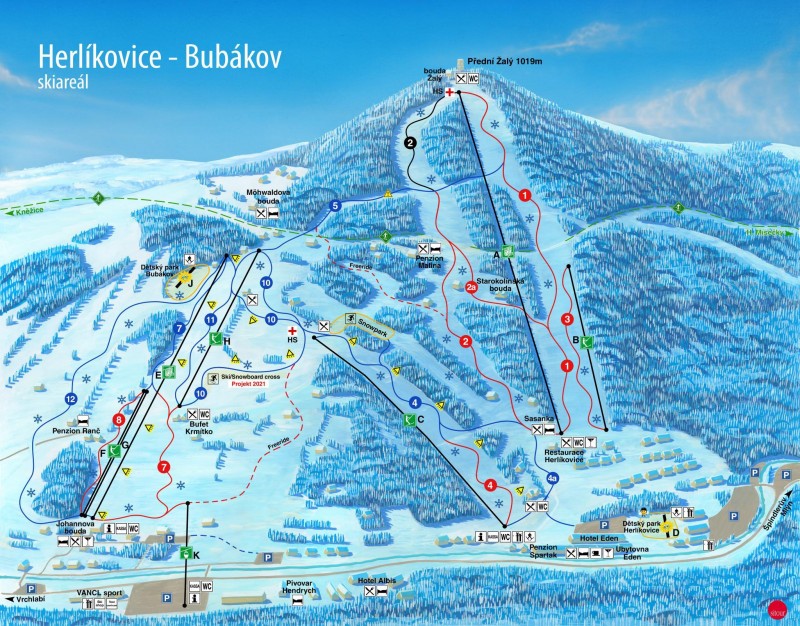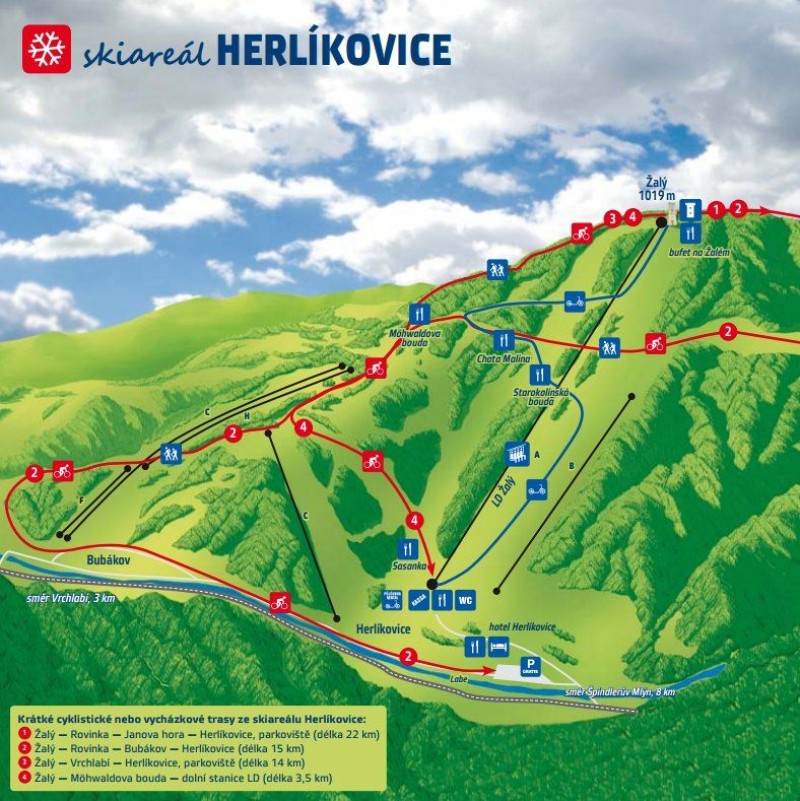History of the Village Strážné and the Settlement Herlíkovice
Today's village of Strážné spans the territory of two historical villages – Herlíkovice and Pommerndorf. We do not know when the first people began to settle in these parts of the Krkonoše forest…
However, iron ore was probably already being mined on Stará Hora in Herlíkovice in the 15th century. Miners and lumberjacks, who felled trees for the local mines and smelters in Vrchlabí, were the first inhabitants of the emerging villages. The golden era of mining in Herlíkovice dates back to the mid-16th century when local mines supplied the largest ironworks in Bohemia at the time, the smelters and forges of Kryštof Gendorf in Vrchlabí.
The first written mention of Herlíkovice dates from 1627, when it was already part of the Horní Branná estate. Strážné, then known as Pommerndorf, appears in written sources only in 1754 as part of the second mountainous division of the Vrchlabí estate. According to legend, it was founded during the Thirty Years' War by exiles from Pomerania. Most local residents made their living from forestry and cattle breeding. Dairy farming, producing primarily butter and the famous Krkonoše herbal cheese, fully developed in the second half of the 17th and 18th centuries. Groups of cottages are still named after the farmers, such as Rennerovky, Lahrovy, and Friesovy Boudy.
The purpose of other cottages is revealed by their names – Rybniční Domky (Pond Cottages) and Hříběcí Boudy (Foal Cottages). After 1792, when mining on Stará Hora ceased, textile production became the main source of livelihood for the local population alongside agriculture and forestry. In most of the cottages in Strážné and Herlíkovice, spinning and weaving were done, first from flax and then from cotton. However, from the second half of the 19th century, production was concentrated in textile factories in the valley, and the mountain dwellers gradually began to move there for work. When writing about sources of livelihood, we should not forget the quarry of high-quality Krkonoše marble at Hříběcí Boudy. The local stone was used in construction as well as for artistic purposes, not only for small souvenirs but also as raw material for sculptors.
From the end of the 19th century, tourism began to develop as well. In addition to day-trippers from Vrchlabí, visitors from greater distances and even from abroad began to arrive. Strážné became a sought-after resort.
The first half of the 20th century was very hectic. At the very beginning of the century, the local population was affected by the nationally motivated „Away from Rome“ movement, resulting in many Herlíkovice residents converting from Catholicism to Protestantism. A beautiful Art Nouveau Protestant chapel from 1904 stands as a monument to these events.
The people of Strážné built their church in 1931, a Catholic church dedicated to St. Joseph. By then, however, the Great Depression had hit hard, severely impacting the local population employed in the textile industry. This also contributed to a significant rise in support for the Henlein's Sudeten German Party, which won decisively in both parliamentary and local elections. The locals then logically welcomed the annexation of their villages to the Reich within the Sudetenland with enthusiasm. However, they soon felt the consequences of World War II. Many men from both villages died on the fronts. Their work had to be taken over by prisoners, for whom camps were built in Herlíkovice by the Elbe and in Strážné near the quarry.
After the war, the rapid expulsion of the German population, which formed the overwhelming majority, followed. The guilty and the innocent alike had to leave. The distinction was minimal. The new Czech population was far from able to numerically replace the original expelled residents. Therefore, Herlíkovice ceased to exist as a separate village in 1951. It was divided between Vrchlabí and Strážné. Domestic weaving disappeared, and agriculture was significantly reduced. Thus, Strážné became purely a recreational area, turning into a center for cross-country and downhill skiing in winter.
Zdroj: Strážné, oficiální web obce



